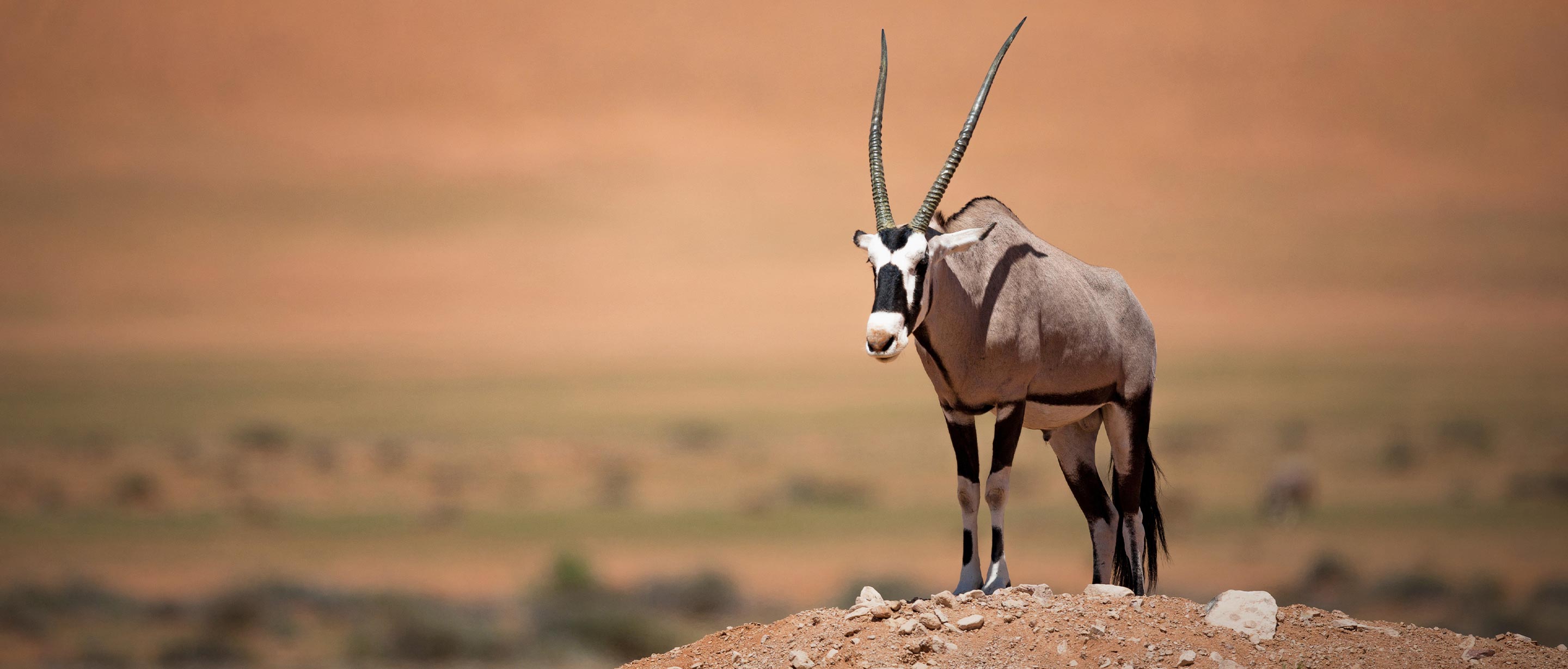

These animals have been hunted for their horns and hides by natives and their meat is also prized. Mankind has been the greatest threat to Scimitar-horned oryx populations. These blood vessels travel close to the nasal passage allowing them to cool by five degrees Fahrenheit before it is pumped to the brain which is one of the most heat sensitive organs of the body. Up to this temperature there is a normal flow of heat from the body to the environment without a loss of water, only after this point does it start to perspire.Īnother anatomical adaptation that allows the oryx to tolerate high temperatures that would be lethal to most other mammals is a network of fine blood vessels that carry blood from the heart to the brain. They are able to survive without water for nine to ten months due to specialized kidneys that prevent excess loss of water through urine and minimizing perspiration by raising their body temperature to a maximum of 116 degrees Fahrenheit as well as obtaining some moisture from their diet. They are very well adapted to their harsh environment, they have large spread hooves which allow them to walk on the sand of their dry habitat.

The female’s horns are usually more slender then those of the male and the length and thinness of the horns make them particularly fragile and they are prone to breaking. They curve backwards and on average reach a length of 40 inches. The species most distinguishing feature is there long sickle shaped horns which are found on males and females. Oryx calves are born with a beige colour coat and there markings will develop as they age.
#Orx animal skin#
Their white coat helps to keep the oryx cool by reflecting the heat of the desert sun and they have black skin to prevent sunburn. They have chestnut brown vertical stripes on their faces and a long tufted tail. This study confirms that in the male rat, the reduction of sex hormones induced by ORX is associated with a decrease in bone mass in the mandible.Scimitar horned oryx have a white coat with a chestnut brown neck and chest and some individuals have chestnut brown flanks and thighs also. For BMC of the molar region, the CV was improved and significant bone loss occurred in the ORX group at 16 weeks ( P<0.016). The coefficient of variation (CV) for BMC was poor on the whole bone and no differences could be observed even at 16 weeks. The bone mineral content (BMC) and density (BMD) of the hemimandible and in a region centered on the molars were measured by DXA.

Quantitative modifications were confirmed by texture analysis of numeric radiographs using the run-length technique. Bone loss was observed qualitatively at 16 weeks in ORX animals. Numeric radiographs, centered on the molar region, were obtained. In each group, six rats were ORX and six sham-operated (SHAM) animals were used as control. Forty-eight male Wistar rats were divided into four groups and studied over 2, 4, 8 and 16 weeks. We have studied the time effects of ORX on the alveolar bone in the rat. In the rat, orchidectomy (ORX) is associated with an increased bone resorption resulting in bone loss. Osteoporosis has been suggested as a risk factor for dental problems.

There is some controversy about the relationships between bone loss in these sites and in the mandible. In humans, hypogonadism is associated with osteoporosis and can be studied by densitometry (DXA) on the vertebrae or long bones.


 0 kommentar(er)
0 kommentar(er)
